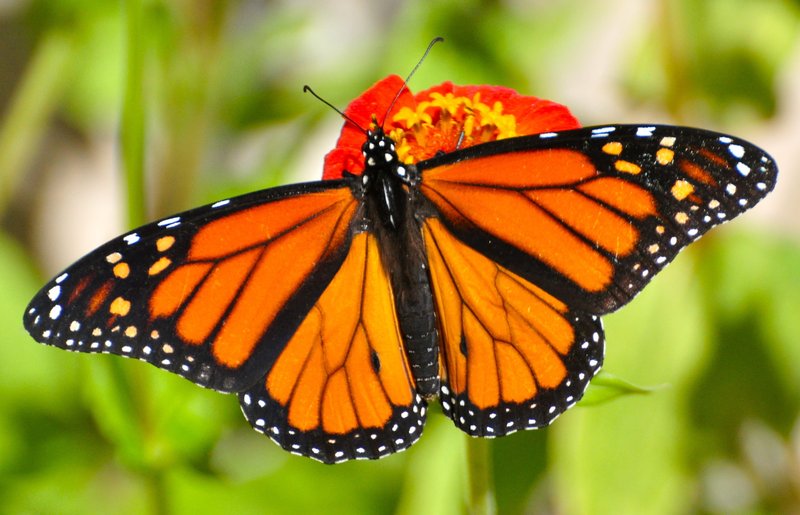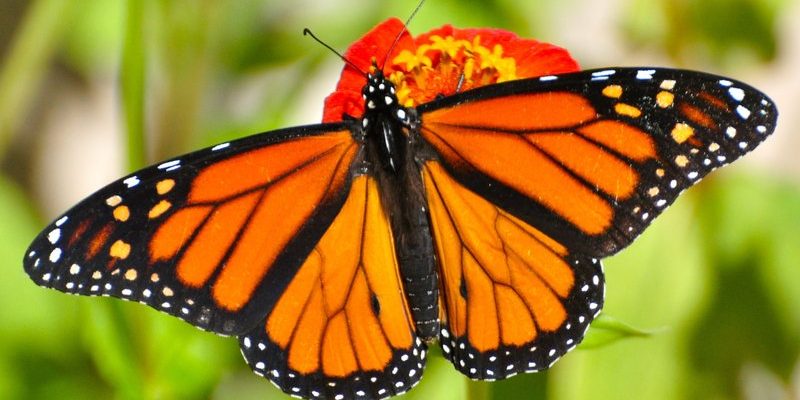
Sometimes, these myths can overshadow the genuine wonders of the monarch butterfly. If we unpack these ideas, we can appreciate the monarchs even more. Think of it like peeling an onion—each layer reveals something new and exciting. So, let’s dive into some of the most common myths about these incredible creatures.
Myth 1: Monarch Butterflies Are Poisonous
You might have heard that monarch butterflies are poisonous, which can definitely raise eyebrows. Here’s the truth: while they aren’t poisonous to humans, they do have a trick up their sleeve. Monarchs feed on milkweed during their caterpillar stage, and this plant contains toxins called cardenolides.
These toxins build up in the monarch’s system, making them unappetizing to predators. Imagine how you’d feel if you’d just eaten a bitter lemon—most animals learn to avoid monarchs after a taste test. This clever defense mechanism is what gives them that reputation for being poisonous. But don’t worry, if you ever see a monarch up close, it won’t hurt you!
Myth 2: All Monarchs Migrate
Another common misconception is that all monarch butterflies migrate. While it’s true that the majority undertake an impressive journey from North America to central Mexico, not every monarch joins the migration parade.
You see, this migration is mostly about survival. As the weather cools down, those that don’t migrate often face harsh conditions that can affect their lifespan. Think of it like making a decision about whether to move to a warmer place for the winter. Some monarchs stay in areas that remain temperate, enjoying a year-round warm climate. It’s a choice shaped by environmental conditions and individual circumstances.
Myth 3: Monarch Caterpillars Are Just Small Worms
You might be tempted to think of monarch caterpillars as nothing more than tiny worms. However, these little creatures are far more fascinating! Monarch caterpillars are known for their striking black, yellow, and white stripes, and they undergo a dramatic transformation to become butterflies.
During this stage, they’re munching away on milkweed, growing plump and preparing for one of nature’s most incredible changes. When they’re ready, they form a protective casing called a chrysalis. This is where the real magic happens. Inside that little armor, they’re restructuring their entire body—a true metamorphosis! This process is anything but ordinary; it’s a beautiful dance of growth and transformation.
Myth 4: Monarchs Only Come in One Color
Ah, the classic idea that all monarch butterflies look the same. While the orange and black coloration is iconic, you might be surprised to know that they can actually display variations in color and pattern.
Some monarchs can appear more yellowish or have a deeper orange hue, depending on their genetics and environment. Plus, there are also variations called dark morphs that have more black and less orange in their wings. This variety adds to the charm of these butterflies and reflects the rich diversity present in nature. It’s kind of like meeting a friend who always surprises you with different outfits!
Myth 5: Monarchs Only Live for a Few Weeks
Another myth is that monarch butterflies have short lives, lasting just a few weeks. While it’s true that most adult monarchs live about two to four weeks, there’s a special group that breaks this mold.
The migratory monarchs, those that travel to Mexico, can live up to eight months! This extended lifespan is crucial for their migration journey, allowing them to make the long trek south. Imagine planning a road trip and needing to last for months on the road—these butterflies are equipped for the journey of a lifetime. They’ve adapted to survive in different conditions and make their incredible migration.
Myth 6: Monarchs Are the Only Butterflies That Migrate
When discussing butterfly migration, it’s easy to focus solely on monarchs, but they’re not alone in the skies. While their migration is indeed the most famous, there are other butterflies that also travel long distances.
For example, the painted lady butterfly migrates annually and covers vast distances similar to monarchs. However, monarchs have a unique migratory path, where they can travel thousands of miles in a single season! It’s a fascinating world out there, packed with many species that undertake impressive journeys, proving that migration isn’t just a monarch specialty.
Myth 7: Monarch Butterflies Are Endangered Because of Climate Change
Finally, you might think that all the challenges facing monarchs stem from climate change. While this is a significant issue, many factors contribute to their decline.
Habitat loss, particularly due to urban development and agricultural expansion that eliminates milkweed plants, plays a major role. Pesticide use is another culprit, hurting their population. It’s a complicated situation that requires a multi-faceted approach for recovery. While climate change does impact their habitat, addressing all these factors offers a clearer path to preserving the monarch’s future.
Understanding these common myths about the monarch butterfly not only helps us appreciate these incredible insects better, but also shines a light on the importance of conservation efforts. Monarchs are more than just pretty wings; they’re a crucial part of our ecosystem.
By spreading accurate information, we can help protect these butterflies and their habitats. So, next time you spot a monarch fluttering by, remember the fascinating truths behind their lives. Each one is a story of survival and beauty, just waiting to be discovered.

